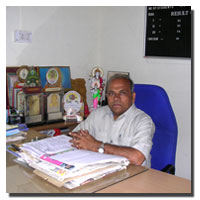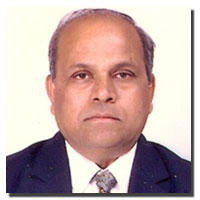Fracture & Delayed Bone Healing Research Project
About Project :-
- Fracture Research Project was commenced at 1st January 2000.
- This project is in collaboration with ” Sushrut Medical Care & Research Society’s Hardikar Hospital “, Pune.
- Total number of patients enrolled under this Fracture Research Project till date is 600.
- This Fracture Research Project is especially beneficial for the Delayed or non healing Fracture Patients.
- Treatment Modalities available for patients here are Oral Medications as well as Panchkarma Treatments which have proven very beneficial for fracture patients.
- Principal Investigator of this Fracture Research Project is Dr. S. P. Sardeshmukh.
- Co – ordinator of this project is Dr. S. M. Hardikar.
- Follow up of this Fracture Research Project is done by Monthly X-ray status to judge efficacy of treatment.



Background of Fracture and delayed bone healing Project.
FRACTURE RESEARCH PROJECT BACKGROUND
Summary of proposed research indicating overall aims of research importance of the objective and application of the work in the context of national priorities of medical research.
Qualitative and quantitative studies on fracture healing have been going on for nearly three centuries. Accidents are increasing everyday due to phenomenal advances in industrial and technological sciences. Severity and extent of multiple injuries due to vehicular accidents have changed over a period of time. In the view of variables biology responses of fracture healing due to nutritional, environmental factors, patient treatment variables, there is a need of comprehensive assessment of fracture patients. Due to availability of sophisticated radio-diagnostic imaging techniques, biochemical markers; the natural history of bone healing needs to be studied with new perspectives.
Practicing orthopaedic surgeon is in a dilemma when a fracture is not healed within the stipulated period of 6-8 weeks. The ultimate result being non-union or delayed union. Such patients resort to different types of modalities of treatment like Ayurved, Homeopathy or Herbal medicines with loss of their earning capacity.
Overall Aims
In Ayurvedic system of medicine there are references of treatment of “Asthibhang”. However scientific documentations of results are very scanty.
Therefore our prospective study is aimed at:
- Describing various variables influencing bone healing process in fracture cases & non union by interpretation of clinico imaging techniques and biochemical marker.
- To evaluate efficacy of Ayurvedic treatment as an adjuvant therapy in conservatively and surgically intervened fracture cases.
Importance of Objective
Although various methods of Ayurvedic treatment like Shodhana, Shamana, and external methods like oils, lepasare reported in “Charak Sutra” introspection from allopathic out look point of view is not done due to lack of inter disciplinary approach in fracture cases. It is only when Allopathic treatment fails patient seek to Indian system of medicine. If Ayurvedic medicines are used as an adjuvant therapy in combination with conservative or surgical techniques for fracture stabilization, it would go a long way in offering best possible results of Ayurvedic treatment in fracture cases through objectives mentioned earlier will be done.
What Ayurved says about Fracture and bone healing.
What Ayurveda says about Fracture and Bone healing
Present Knowledge and relevant bibliography including full title of articles relating to the problem
- Present Knowledge
Ayurveda is a life science. Can it give relief to fracture patients? The answer is Yes, Trauma and fractures are as old as human being and they were treated by the medical sciences of those times.
In Indian culture, as mentioned in Ayurvedic Texts it is a practice to give fracture patients wheat, milk and sugar combination for faster healing and they are known to cure the fractures faster.
In practice also, many cases of non-healing fractures when treated with Ayurvedic medicines, encouraging results are seen. Asthi dhatu is the main dhatu concerned with this condition. Therefore to improve the condition of Asthi dhatu and Asthi dhatwagni, the treatment is given.
There are various causes, quoted in Ayurvedic texts which affect the bone healing. They are chiefly, salty sour, pungent food, non-nourishing and dry food, exertion, mental tensions, facing heat, sunlight, infections in the fractures and age.
Bony part of our body or endoskeleton is termed as Asthi dhatu , in Ayurveda. Conceptually, it is a wider aspect than simple bone.
According to Ayurvedic basics, the main function of Asthi dhatu is dharana, i.e. giving a stout posture to the body. The other function of Asthi dhatu in which it conceptually differs from bone is the poshana i.e. nourishment of Majja dhatu. This is the peculiarity of Ayurvedic thinking in which it differs a lot from other medical sciences. Ayurveda explains the internal link between all the dhatus (similar to tissues described by modern science). All the dhatus are dependent on one another in some way or the other. There are 7 dhatus viz. Rasa, Raktha, Mamsa, Meda, Asthi, Majja and Shukra. Each dhatu is influencing the latter and is influenced by the former one thus it is clear that Asthi dhatu is greatly influenced by Meda dhatu (similar to fat). Main part of the nourishment of Asthi dhatu comes from Meda, and also directly from Ahara rasa i.e. food which is converted into the absorbable form by Agni. - Thus the three main causes for hampered growth of Asthi are –
- Lack of Asthi nourishing component in the food.
- Some disturbance (Vikruti) on Meda dhatu.
- Lack of converting power of Agni nourishing components into Asthi due to some disturbance in Asthi dhatwagni.
The main constituent is Prithvi., (i.e. the hardest and the strongest of five basic constituents called panchamahabhutas) making Asthi so strong and stout. The another one is Akasha, which makes it porous.
There are 5 types of Asthi, Viz. Kapala, Valaya, Ruchaka, Taruna and Nalaka.
These types are made according to the structure i.e. Kapala meaning Flat bones. Nalaka meaning long bones, Valaya meaning those of variable sizes as vertebrae, Ruchaka meaning teeth and Taruna meaning the cartilage.
All the philosophy of Asthi dhatu takes place in Asthivaha Srotasa and Asthidhana Kala. The Asthidhana Kala lies in the pakwashaya, which is similar with large intestine. All the conversion into Asthi dhatu of different nourishing factors takes place in this part, because this is the seat of Asthi dhatwagni. Thus all nourishment begins in Pakwashaya.
Fracture is called as Bhanga, in Ayurvedic terminology.
- Lack of Asthi nourishing component in the food.
- The bhagna are mainly divided as-
- Sandhimukta i.e. dislocation and
- Kandabhagna i.e. fractures
- According to nature of bone involved.
The cartilage have tendency to bend, long bones break, flat bones develop cracks and the teeth are crushed to small fragments. - According to the wound in the fracture area.
They are divided as Sawrana, meaning open fractures & Awrana, meaning contused fractures. - Symptoms of Bhagna
The main symptoms of any fractures are – Oedema , calor, rubor, pain, tenderness, loss of posture of that particular part and above all is restlessness in any position of that particular part.
Note – All this information is discussed by Sushrutacharya the first over surgeon of mankind.
Various Treatment principles of Fracture and bone healing.
Treatment Principles of Fracture and bone healing
The main line of treatment is reduction and immobilization. In natural course, the body heals the fractures. But many times, the fractures, just don’t heal. Here the role of Ayurvedic philosophy begins. The causes of non-nourishment of the Asthi are the causes of non-union, because due to non-nourishment, regeneration is hampered and many times calcium and other tablets also cannot give result to the patient, because the physiology is disturbed and absorption of these things doesn’t take place. This is the importance of dhatwagni, to convert the nourishment of its dhatu in the absorbable form.
Thus the line of treatment will be –
- Correction of Asthidhatwagni.
- To rule out any vikruti of former dhatu.
- To provide nourishment to the Asthi.
- To start regeneration process in the Ashti.
All these steps are interrelated and any treatment procedure covers all the above points in more or less proportion.
Starting of regeneration procedure in Asthi dhatu is yet another peculiarity of Ayurvedic philosophy. Regeneration of any dhatu in the body is governed by Shukra and Oja to correct these entities is also an important thing.
The treatment occurs in 2 main parts –
- Shodhana and
- Shamana
Behind all the above mentioned vikrutis, which are to be corrected, there is vitiation of Vata, the basic body humon, which governs almost all the body physiology. Therefore for correction of Vata, the very first step is Basti, which is the best medicine for Vata as Shodhana chikitsa.
Basti means enemas of various oils, decoctions, honey, etc. which clinse the pakwashaya, regularize the Vata and thus improve all body metabolism. As stated above pakwashaya is also the root of Asthidhana Kala. Thus correction of pakwashaya status helps in the improvement of bone physiology.
